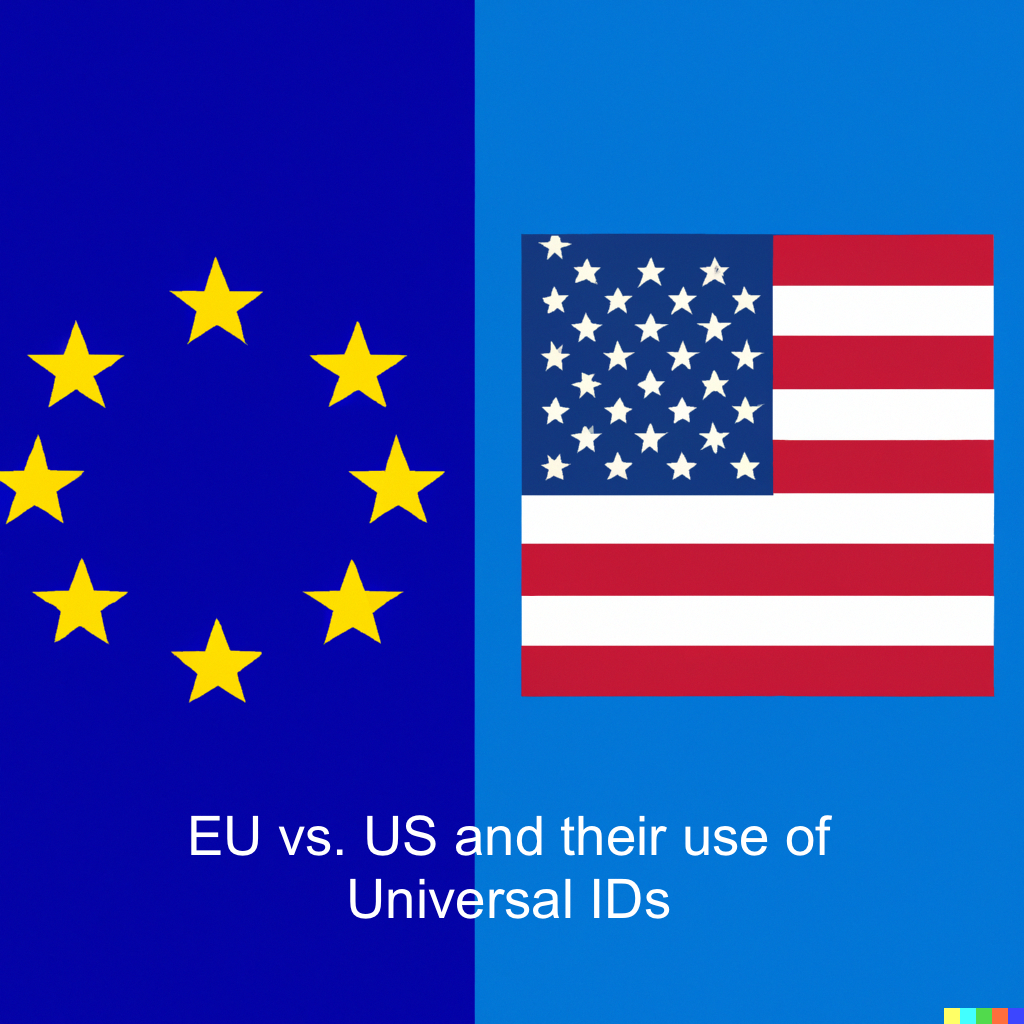Thoughts, posts, and musings.
Jonathon Shaevitz

We are a month out and time has provided further reflections on the conversations and memes at the show. Let’s jump right to Observations along with the Opportunities they present
Q4 Doom:
Clearly, everyone remains very nervous about Q4 and Q1. The economy feels lousy and we all know that advertising is a leading indicator for a downturn.
OBSERVATION:
Publishers are looking for ways to rationalize the vendors they use to cut costs and stop over paying for features they arent using
THE OPPORTUNITY:
Identify the vendors that deliver what you need and no more - or make sure your contract value reflects the value you receive, versus paying for s surplus because thats the way the vendor offers their bundle.
Monetization:
For publishers, monetization strategies are becoming narrower and more targeted, thereby more work for less revenue.
OBSERVATION:
Header bidding remains a strong force, but the easiest opportunities have been found, and so now it is working around marginal improvements, finding partners that actually have better technology.
Also, Affiliate revenue strategies continue to grow, but at a slower pace. The layups have been found and more effort is required to deepen the ecom channel as a long term viable item in the publisher revenue portfolio
THE OPPORTUNITY:
There is a lot at stake in figuring out how data is going to play within header bidding.
Adjacent affiliate categories can be developed by partnering with a new breed of content agencies that specialize in affiliate content marketing. They possess the content expertise and pre-negotiated agreements with affiliate companies and partner on a revenue share basis.
CTV:
Not surprisingly CTV continues to grow, grow, grow, but most publishers are ill equipped to take advantage.
OBSERVATION: There is little first party data, a lack of standardized, quality and consistent contextual signals (this problem isn’t just across CTV inventory either) to target and a lack of understanding and expertise on how to monetize the assets mid-tier publishers do have
THE OPPORTUNITY: Use your quality to increase registrations to increase your first party data and work to get your contextual analysis into Seller Defined Audiences (Growth Code can help here to provision this data into both Open and Deal ID to maximize pricing.
Data and Identity:
All but the largest publishers appear to be still be struggling around data and identity and their rightful place in steering the monetization strategy
OBSERVATION:
There is no clear Industry game plan. It feels like every vendor is promoting a competing solution: Google PAIR and Floc, Trade Desk UUID 2.0 along with Open Path, LiveRamp (but seeing less of this in all but largest pubs), Amazon TAM - Syncing users in the bid stream.While this is growing in popularity and monetization and extending well beyond Amazon, it requires a level of expertise that is often beyond an independent publishers' capabilities. To boot. DMPs seem to be offering their own data solutions that feel competitive to publishers and their own PMPs (but also can be incremental)
THE OPPORTUNITY:
Leverage identifiers that you do have (1P pixel, hashed email) and build out the graph of users to include your key attributes like contexts, demographics, etc. While this sounds complex, it can be done with relative low lift and minimal tech costs using infrastructure as a service (link to our site). This leads to a key conclusion: Seller Defined Audiences stands to be the next BIG THING for publishers. Its value is not generally well understood and few publishers know how to make it work. (BTW we do this with our publishers today, so contact us to learn more about it)
Did we miss anything? We’d love to hear your thoughts…

What a Google Ad Tech Breakup Could Mean for Publishers If the U.S. Department of Justice (DOJ) succeeds in its push to break up Google’s ad tech empire, the digital advertising ecosystem could undergo one of the most transformative shifts in its history. The proposed divestiture of Google Ad Manager (GAM), which includes DoubleClick for Publishers (DFP), and the AdX ad exchange could dismantle Google’s monopolistic grip on publisher ad tech, potentially leveling the playing field for publishers, advertisers, and competing ad tech providers. For publishers, this could be a rare opportunity to reclaim control over their ad monetization strategies—but it also comes with risks and uncertainties. Below, we explore the implications of this potential breakup, drawing on recent developments, and provide guidance for publishers to navigate this evolving landscape. The Stakes: Why Google’s Ad Tech Dominance Matters Google’s dominance in digital advertising stems from its integrated ad tech stack, which controls key components of the programmatic advertising supply chain. Google Ad Manager (GAM) bundles the DFP ad server with the AdX exchange, creating a system where publishers must use GAM to access AdX’s exclusive demand, including from Google Ads. This "tying" arrangement has given Google a 90% share of the publisher ad server market in the U.S. and a 50–90% share of the ad exchange market, allowing it to extract fees as high as 30% or more from publisher revenue. Globally, 81% of small publishers monetize their ad inventories using GAM, and over 1,895 companies worldwide use GAM for advertising optimization. Google’s ad tech also accounts for approximately 27–49% of the programmatic advertising market, depending on the region and methodology, with significant revenue siphoned off as an “ad tech tax”. This market power has stifled competition and innovation. Publishers are locked into GAM not because it’s unequivocally superior but because opting out means losing access to AdX’s vast demand pool, which includes small and midsize advertisers using Google Ads. As a result, alternative ad servers struggle to gain traction, and publishers face limited choices in optimizing their ad monetization. The DOJ’s case, bolstered by an April 17, 2025, ruling by U.S. District Judge Leonie Brinkema that Google violated the Sherman Act, argues that this bundling is anticompetitive and must be addressed through structural remedies, such as divestitures. What a Breakup Could Look Like The DOJ’s proposed remedies, outlined in a May 2025 court filing, are sweeping. They include: Immediate Sale of AdX: The DOJ wants Google to divest AdX “as soon as possible,” with a court-appointed trustee overseeing the process to ensure competitive buyers. Google would be barred from operating an ad exchange for 10 years. Phased Divestiture of DFP: The DOJ proposes a three-phase plan for DFP, starting with an API to integrate DFP with rival exchanges, followed by open-sourcing DFP’s auction logic, and culminating in a full divestiture to a separate entity from AdX’s buyer. Data and Interoperability Reforms: Google would be required to share DFP data with competitors, open AdX’s real-time bidding to rival ad servers, and refrain from using first-party data (e.g., from Search, YouTube, or Gmail) to gain unfair advantages in ad targeting. Behavioral Restrictions: Google would need to eliminate practices like Unified Pricing Rules (UPR), which limit publishers’ ability to set different price floors for different bidders, and avoid reinstating “first look” or “last look” auction tactics that favored Google’s exchange. These remedies aim to “decrease switching costs for publishers” and “restore competition more quickly,” potentially fragmenting Google’s vertically integrated ad tech stack. However, Google has pushed back, arguing that divestitures would harm small businesses and publishers by raising costs and disrupting tools they rely on. The company has proposed less drastic remedies, such as sharing AdX bids with rival ad servers and deprecating UPR, while planning to appeal the ruling. The remedies trial is set to begin on September 22, 2025, and any changes could take years to implement, especially with appeals looming. Potential Impacts on Publishers A breakup of Google’s ad tech stack could have profound effects on publishers, both positive and negative: Opportunities: Increased Competition and Innovation: Separating AdX from DFP would allow publishers to choose ad servers based on merit—speed, transparency, or optimization tools—rather than access to AdX demand. New ad servers could emerge, offering lower fees or innovative features. Flexible Demand Routing: Publishers could route inventory across multiple supply-side platforms (SSPs) without being funneled through AdX, potentially increasing yields by accessing diverse demand sources. Lower Take Rates: Google’s reported 30%+ take rate3 could decrease as competition drives down fees across SSPs and ad servers. Data Control: Requiring Google to share DFP data and limit its use of first-party data could empower publishers to optimize monetization strategies and negotiate better terms with ad tech partners. Header Bidding Revival: Publishers could leverage header bidding technologies like Prebid to pit AdX against other SSPs directly, a practice Google has historically undermined through tactics like open bidding. Risks Short-Term Disruption: Transitioning to new ad servers involves significant technical and resource costs, potentially leading to revenue dips. News Corp’s 2017 switch from GAM resulted in a temporary loss of AdX demand, illustrating the challenge. Increased Ad Server Costs: GAM’s DFP is currently free for AdX clients, but a standalone DFP or rival ad servers could introduce fees (e.g., $0.25–$2 CPM for video ad servers), raising costs for publishers. Fragmented Ecosystem: A fragmented ad tech market could complicate ad buying, making it harder for advertisers to target audiences efficiently, which might reduce demand for publisher inventory. Uncertainty and Delays: With Google’s appeal and a remedies process that could stretch into 2026, publishers face prolonged uncertainty, delaying strategic planning. What Publishers Should Do Now Given the uncertainty surrounding the DOJ’s proposed remedies and the lengthy timeline for implementation, publishers should adopt a cautious, watch-and-plan approach rather than making immediate changes to their ad tech stacks. The remedies have not yet been approved by the court, and even if they are, the divestiture process and subsequent market adjustments will take time—likely years, considering Google’s planned appeal and the complexity of untangling its ad tech ecosystem. For the short term, there is minimal risk in maintaining the status quo, as Google Ad Manager and AdX remain functional and dominant. However, publishers should stay vigilant and begin strategic planning to capitalize on long-term opportunities. Here’s why and how: Why Hold Steady Uncertain Outcome: The DOJ’s remedies, including the divestiture of AdX and DFP, are proposals, not mandates. The September 2025 remedies trial will determine their fate, and Google’s appeal could delay or alter the outcome significantly. Acting prematurely could lead to unnecessary costs or disruptions. Implementation Lag: Even if approved, divestitures and interoperability reforms will require months or years to execute. For example, the DOJ’s phased DFP divestiture plan includes interim steps like API development, which could take 12–24 months before publishers see tangible changes. Stable Operations: GAM and AdX continue to deliver reliable demand and revenue for publishers. Switching ad servers now risks losing access to AdX’s demand pool, which remains critical for many, without guaranteed benefits from unproven alternatives. Market Readiness: The ad tech market isn’t yet prepared for a post-Google world. Alternative ad servers like Magnite or PubMatic exist, but their ability to fully replace GAM’s scale and integrations is untested at Google’s current market share. Long-Term Opportunities While immediate action is unnecessary, the potential for a breakup presents exciting possibilities. A decoupled AdX could become just another demand source in a publisher’s programmatic stack, competing on equal footing with SSPs like The Trade Desk or Amazon Publisher Services. Publishers could adopt new ad servers optimized for speed, transparency, or lower fees, and leverage header bidding to maximize yield across diverse demand partners. This shift could reduce Google’s 30%+ take rate3 and give publishers greater control over their data and inventory. These opportunities, however, depend on a clearer regulatory outcome and a more mature competitive landscape. Recommended Actions Publishers should focus on monitoring developments and preparing for potential transitions without disrupting current operations. Specific steps include: Stay Informed: Track the DOJ’s remedies trial and Google’s appeal through industry publications like AdExchanger, Digiday, and Adweek. These outlets provide detailed coverage of legal proceedings and their implications for publishers. Join trade organizations like the News/Media Alliance or Interactive Advertising Bureau (IAB) to access updates, webinars, and advocacy opportunities related to the Google case. Assess Your Dependency: Conduct a lightweight audit of your ad tech stack to understand your reliance on GAM and AdX. Identify the percentage of revenue tied to AdX demand and note any pain points (e.g., high fees, lack of transparency) that a breakup could address. Use this audit to inform long-term planning without committing to immediate changes. Engage with Alternatives (Lightly): Begin informal discussions with alternative ad server providers (e.g., Magnite, PubMatic, OpenX) to understand their capabilities, costs, and integration processes. Request demos or case studies to gauge their potential fit. void testing or migrating to new platforms yet, as the costs and risks outweigh the benefits until remedies are finalized. Plan for Scenarios: Develop high-level contingency plans for different outcomes (e.g., full AdX/DFP divestiture, partial remedies, or no change). Outline potential ad server options, estimated switching costs, and revenue impacts based on historical examples like News Corp’s 2017 GAM exit. Share these plans with internal stakeholders (e.g., ad ops, finance) to align on long-term priorities without executing them now. Monitor Industry Trends: Keep an eye on how competitors and peers are responding to the DOJ case. For example, note whether large publishers begin experimenting with non-Google SSPs or header bidding solutions like Prebid.js. Track the growth of cookieless and first-party data solutions (e.g., ID5, Unified ID 2.0), as these could become critical in a post-breakup ecosystem where Google’s data advantages are curtailed. Key Message Publishers should watch the DOJ-Google case closely and plan for a future where AdX and GAM are no longer inextricably linked. However, there’s no need to act now. The proposed remedies are not yet approved, and their implementation will be slow, giving publishers ample time to adapt. The long-term prospect of integrating new ad servers and treating AdX as one of many demand sources is compelling, but the uncertainty and stability of the current system mean there’s little risk in waiting. By staying informed and preparing strategically, publishers can position themselves to thrive in a more competitive ad tech landscape when the time comes. The Road Ahead The DOJ’s case against Google is a historic moment for digital advertising, signaling that regulators are serious about addressing Big Tech’s monopolistic practices. For publishers, a breakup of Google’s ad tech stack could restore agency over their monetization strategies, foster innovation, and reduce Google’s outsized control over ad revenue. However, the transition won’t be immediate or seamless. Publishers who monitor developments and plan thoughtfully—without rushing into premature changes—will be best positioned to capitalize on a more publisher-friendly ecosystem. As the remedies trial approaches in September 2025, publishers should view this as an opportunity to prepare for a future where their ad tech choices reflect their business needs, not Google’s mandates. The promise of AdX and GAM was once yield and efficiency, but over time, it has morphed into control over the open web’s infrastructure. A breakup could return that control to publishers, but only if they’re ready to navigate the shift strategically. For now, stay vigilant, plan carefully, and trust that there’s time to act when the path forward becomes clearer. Footnotes Google has a 90% share of the publisher ad server market in the U.S. [TechPolicy.Press, "How Google Manipulated Digital Ad Prices and Hurt Publishers, Per DOJ," February 2, 2023] Google holds a 50–90% share of the ad exchange market. [TechPolicy.Press, "How Google Manipulated Digital Ad Prices and Hurt Publishers, Per DOJ," February 2, 2023] Google extracts fees as high as 30% or more from publisher revenue. [AdExchanger, "The Positives And Negatives Of A Potential Google Ad Tech Breakup," April 21, 2025] 81% of small publishers globally monetize their ad inventories using Google Ad Manager. [DemandSage, "82 Google Ads Statistics 2025 – Market Share & Ads Revenue," January 31, 2025] Over 1,895 companies worldwide use Google Ad Manager for advertising optimization. [BuiltWith, "Google Ad Manager Usage Statistics," accessed May 8, 2025, https://trends.builtwith.com/ads/Google-Ad-Manager] Google’s ad tech accounts for 27–49% of the programmatic advertising market, with 49% of ad spend captured by the supply chain in some studies. [Statista, "Digital ad revenue share by company 2023," December 2, 2024, and ISBA/PwC Programmatic Supply Chain Transparency Study, 2020] U.S. District Judge Leonie Brinkema ruled on April 17, 2025, that Google violated the Sherman Act. [The New York Times, "Google Is Illegally Monopolizing Online Advertising Tech, Judge Rules," April 17, 2025] Rival ad servers could introduce fees of $0.25–$2 CPM for video ad servers. [AdExchanger, "The Positives And Negatives Of A Potential Google Ad Tech Breakup," April 21, 2025]

In a surprising twist, Google has decided to keep third-party cookies on the Chrome users' menu, stirring up a mix of relief and confusion among online publishers. The tech giant's schitzo pivot from its initial plan to scrap these digital trackers has left many wondering: What is Google doing Google's new recipe for user privacy introduces user choice, allowing users to opt in or out of cookies as they please. This uncertainty about how this new policy will work means publishers have to plan for everything. If the new Chrome defaults to “opt-out”, this is putting the cookie into a vegetative state but not actually killing it. It also makes the user the decider to deprecate the cookie versus Google being the one to do this (and face antitrust ). Alternatively, if the default is “opt-in”, they preserve the cookie’s continued slow decline. Finally, this à la carte approach to browsing data could see users cherry-picking their privacy settings site-by-site, potentially leaving publishers to face an inconsistent scenario regarding ad targeting capabilities. The Privacy Sandbox, Google's playground for developing privacy-preserving tech, remains open for business. Some have even posited that Google’s continued lack of leadership points to its need to spend more time baking out the Privacy Sandbox’s negative results and market uptake. Publishers who've invested in this complex and sometimes puzzling initiative can sort of breathe a sigh of relief—those Sandbox APIs aren't going anywhere—but half-baked proposals still remain and lack performance. Given the lack of any clear guidance or leadership, many postulate that Google's latest move positions its pieces to maintain market dominance while appeasing regulators with a veneer of user empowerment. Suggestions from many publishers we have talked to seem to point to the assumption that if the user does opt-out, then the fallback will be the Privacy Sandbox, where Google will look to assert advantages it may have with its own SSP as it did prior to the advent of Header Bidding. The cost? The independent web is worse off again. So, why isn't Google tossing cookies for good as planned? The company is wary of antitrust allegations, as the Privacy Sandbox has shown signs of really hurting ad revenue, with some tests revealing a 60% drop. By keeping cookies on the table, Google can continue to sweeten its high-margin ventures like search and YouTube and monetize its first-party relationships with users–all while theoretically keeping competitors at arm's length by empowering end users to say no to cookies. The big question is if they will opt out users by default like Apple's ATT or default them in by default–or a third option to opt-in on a site-by-site basis, creating a mess of management for publishers. Google's strategy is clever yet self-serving. By giving users the power to deprecate cookies themselves, Google can potentially weaken open web advertising, and drive more dollars towards its own higher-margin platforms (youTube, Search) and dressing up its dominance as a commitment to privacy. Remember, Google already possesses one the best first-party consented user graphs in the world, competing only with Amazon, Meta, and maybe Apple. For publishers, this means navigating a landscape where Google's decisions cast a long shadow. The uncertainty around Chrome's cookie consent workflow and its implementation timeline adds to the complexity of planning digital advertising strategies. Will publishers have to grovel for cookie consent, or will they be left to rely on the less palatable and poor-performing Privacy Sandbox APIs to monetize their content? As always with Google, to answer the question of what Google wants publishers to do comes from asking what is more profitable to Google. In this case, it seems to be: “If you can get third-party cookies … no worries, we will keep taking your money (but good luck after our Chrome prompts!). If you can't, you are welcome to invest millions and then pay us through the Sandbox … or just give up, and we’ll tell our advertisers to buy our other better stuff.” The industry is now at a crossroads, with a $225 billion question mark hanging over its head. As Google continues to stir the pot, publishers must stay alert and adaptable, ready to adjust their strategies in response to the tech giant's ever-shifting game plan. One thing to never lose sight of, regardless of antitrust, bouts with regulators, user privacy, or other external forces, their incentives never change. The future of digital advertising is still being baked, and publishers will need to ensure they don't end up with a half-baked tiny slice of the revenue pie by over-relying on a vendor bent on taking the whole pie. So, where does this leave the different segments of the ecosystem? What Publishers Should Do Now Stay Informed and Adaptive: Continuously monitor Google's announcements and regulatory developments. Flexibility and quick adaptation to new information will be crucial. Invest in First-Party Data: Strengthen first-party data collection and leverage direct relationships with your audience to reduce dependence on third-party cookies and vendors whose interests are not aligned. Limit your investment in Privacy Sandbox : If you haven’t already sunk money into Privacy Sandbox, WAIT. It is not clear what will happen, but the results so far strongly suggest that you should not throw good money after bad. Enhance User Experience: Focus on delivering high-quality content and user experiences to build loyalty and trust, which can encourage users to opt-in to data sharing. Continue to Invest In Capturing and Leveraging Universal IDs: All the data continues to support the value of UIDs. By adding the leading UIDs into a bid request, you will see: Bid density increases Higher eCPMs Higher CTR rates What SSPs Should Do Now Prepare for Multiple Scenarios: Develop cookie-based and cookieless strategies to ensure seamless operations regardless of user preferences. Expand Your ID Graph: Standing still will not work. We have already seen companies that invest in their own graph create new opportunities. Your relationships with your publishers have value if you can leverage them to enhance your own ID graph. Build Differentiation: We have already seen that the SSPs moving to build curation capabilities are growing. How else can you leverage your position to expand? What DSPs Should Do Now Adapt Targeting Strategies: Develop new targeting strategies that leverage first-party data and contextual targeting to compensate for the potential loss of third-party cookies. Educate Clients: Help advertisers understand the implications of Google's changes and guide them in adapting their strategies accordingly. B uild More Proprietary Targeting Assets: We witnessed DSPs differentiate and grow market share by creating unique targeting strategies. We see many DSPs leaning into curation activities, constructing custom audiences with selected publishers, and creating new targeting recipes to identity curated audiences built on publisher first-party data. What Advertisers Should Do Now Strengthen First-Party Data: Build robust first-party data assets and strategies, including CRM integration, loyalty programs, and direct consumer engagement. Explore Contextual Advertising: Invest in contextual advertising solutions that do not rely on third-party cookies but provide effective targeting. These can be blended with other targeting strategies. Partner with Trusted Platforms : Collaborate with platforms prioritizing user privacy and offering transparent data practices to ensure brand safety and compliance. Also, ensure you aren't working with vendors that practice nefarious methods to stuff fraudulent impressions. Stay Agile : Maintain flexibility in ad spend allocation and be ready to shift strategies based on evolving industry practices and regulatory changes.

Assume that an ID is named IDX. For IDX to function in the ecosystem, multiple parties must utilize it effectively. This means its accuracy and quality need to be predictable. A publisher mints IDX, passes it up the chain either through Prebid or TAM or through secure signals in Google to the SSP, and then forwarded it to the DSP. The buy-side uses these alternative IDs and other first-party data signals to replace the third-party cookie. These signals are the new audience segments– not built on third-party cookies but on first-party data signals with full consumer consent. Advertisers use these IDs to create audience segments, cohorts, and other targeting criteria. For a buyer to evaluate the effectiveness of a campaign, they need to assess whether the different elements that built up that campaign work. These include creative, frequency caps, targeting criteria, and others. However, if 20% of IDX IDs are different users from different browsers within the same household or simply picked as the most valuable ID, the ability to predict and optimize performance isn’t just compromised; it is lost. While individual publishers, tech companies, or other intermediaries might show some short-term uplift, it's built on the back of fraud. It will destroy the credibility of the open web, sending even more of the budget into the safe hands of Google and Facebook. Beyond Deception: Regulatory Risks and Measurement Distortion These deceptive practices were first called out a little over a year ago and continue to spread, tarnishing the industry's reputation. Some SSPs (Sell-Side Platforms) have been caught overwriting user IDs based on bidding parameters, further distorting the process. Companies lure publishers with promises of increased revenue, but these gains are built on deception. Finally, as we have seen over the last few weeks, individual companies are getting called out and will be punished by the market. That is great, but it remains unclear where along the value chain this fraud is occurring. It could originate from the publisher, a data partner, an SSP, or almost anywhere the bid request is touched. ID Bridging presents significant short-term risks beyond eroding industry trust. Measurement and Attribution Disruption: When user IDs are manipulated, accurately tracking campaign performance and measuring ROI becomes difficult. This lack of transparency makes understanding what's driving results challenging and hinders campaign optimization efforts. Regulatory Action and Legal Risks: ID bridging might violate regulations beyond GDPR and CCPA. Data privacy laws worldwide are evolving, and deceptive practices like ID bridging could lead to hefty fines and legal repercussions for the companies involved. Beyond Solutions: The Long-Term Impact of an ecosystem that doesn’t trust addressability. The continued use of ID Bridging could have severe long-term consequences for the programmatic advertising industry: A Damaged Industry Ecosystem: Trust and transparency are necessary for the programmatic advertising industry to be sustainable. Publishers need help to monetize their content effectively and prevent advertisers from wasting resources on ineffective media; if a few selfish vendors poison the water, the value proposition for all stakeholders remains the same. Eroding Consumer Trust: Deceptive practices like ID bridging ultimately erode consumer trust in online advertising. Users becoming more aware of these tactics may block ads altogether, hindering the entire ecosystem. More Delays and Uncertainty. Google’s continued threat of third-party cookie deprecation seems real enough. The current date is ten months away (March 2025). If advertisers do not embrace UIDs for the independent publishing ecosystem, CPMs will continue to fall, and Contextual will be the only game in town. Combine this with Google’s new AI-assisted search, leading to fewer impressions and the downward spiral of independent websites. Make no mistake: ID Bridging is a dead end for everyone. The programmatic advertising industry needs solutions prioritizing transparency, user trust, and responsible data practices. But the solution is quite simple—enforce and follow the rules. In the example above, you have rules from PreBid and Terms of Service from the ID companies, SSPs, and DSPs, so ID Bridging is violating those Terms of Service and is fraud. What Should Publishers Do? Understand who is accessing and manipulating their first-party data signals. Ask partners if they ever overwrite an EID returned by an ID vendor. Maximize legitimate signals. Over 35 different ID modules have already been identified through Pre-Bid. Including more signals will lead to higher CPMs, but not if there is manipulation. ShoulderTap: Unlocking and leveraging data assets Sitting on a treasure trove of data but unsure how to unlock its value? ShoulderTap Advisor Services can help. We empower businesses to transform their first-party data from a hidden asset into a strategic advantage. Our experts guide you in developing data-driven strategies that leverage your unique customer insights. We'll help you create entirely new business capabilities, from personalized marketing campaigns to data-driven decision-making across departments. Visit https://www.shouldertap.co/ to learn more about how ShoulderTap can turn your data into a powerful engine for growth.

The programmatic advertising landscape faces a severe threat disguised as a “solution”: ID Bridging.
First, what is ID Bridging, and what is its original intent? ID Bridging is a term coined as a technique used in advertising to address users in a cookieless environment. Here's a breakdown of what it is supposed to do: Purpose: Target and personalize advertising for users even when traditional third-party tracking cookies aren't available. This is particularly important for publishers who want to monetize their audience in browsers like Safari or on devices like iPhones, where cookies are restricted. How it works: ID bridging leverages a publisher's first-party data, such as email addresses (with user consent, IP addresses, or login information). Initially, the publisher used probabilistic matching algorithms to link this data with a user across different devices or browsers using an educated guess based on patterns and non-perfect identification. Privacy Considerations: ID bridging prioritizes using publisher-owned data, making the user relationship more upfront than third-party data collection. Additionally, hashed or anonymized identifiers might be used, reducing the risk of exposing personal information. Industry Debate: There's debate around ID bridging. Sell-side platforms (publishers) argue it increases revenue by making more inventory accessible to advertisers. Buy-side platforms (advertisers) express concern that it can lead to inaccurate targeting or fraud, as user identification isn't guaranteed. The IAB Tech Lab is working on establishing transparency standards to address these concerns. However, like all innovative solutions, ID Bridging has been bastardized from its original intent, even using this anodyne definition. As more universal IDs have emerged, nefarious industry players have realized they can identify the “most valuable” ID. Thus, ID Bridging has quickly become ID Stuffing. ID Bridging and ID Stuffing are related concepts but cross the line differently. Here's how to distinguish them: ID Bridging: Goal: Legitimate attempt to connect users across devices or browsers using probabilistic matching based on the publisher's first-party data. Focus: deliver a privacy-compliant way for publishers and advertisers to maintain addressability Outcome (intended): More accurate ad targeting and better user experience with relevant ads without the use of the third-party cookie ID Stuffing: Goal: This is a malicious attempt to inflate the perceived value of ad inventory by injecting the bid request with IDs that don’t represent the user on the page. Focus: Deceiving the buyer to get higher ad rates. Outcome: Wasted ad spending for advertisers, inaccurate campaign data, and erosion of trust in publisher inventory and the entire advertising ecosystem. However, this distinction is no longer necessary. There are dozens of accepted Universal IDs (UIDs) (also known as Extended IDs, EIDs), and the third-party cookie is soon disappearing. We have rules that must be followed by the ID companies, Prebid, SSP, and DSP terms of service. (FYI: For the remainder of this article, I will refer to this practice as ID-Bridging as the distinction between the two concepts is inconsequential to the future of the industry The Deceptive Dance and its Impact As with all innovations, some companies saw ID Bridging as an opportunity to exploit a weakness in the system and take money from publishers and their advertiser customers. These operators exploit ID Bridging’s use of probabilistic models to hack the ID sent to the bidder with a higher-value ID (based on the vendor's understanding of analyzing all of the auctions they execute in their SSP). This is fraud. So, Instead of ensuring the ID accurately reflects a specific user, nefarious actors are substituting IDs they believe are more valuable to advertisers, regardless of accuracy. This can involve stuffing third-party cookie IDs from Chrome into Safari sessions based on flimsy connections like IP addresses (trust me, my daughter's interests, intent, and spending are different than my own). This creates a system built on highly unstable foundations, especially in today's privacy-conscious environment with regulations like GDPR and CCPA. It also further destroys the already eroded trust between the buyer and the seller– most times, often the seller isn’t even aware they are doing something nefarious - it's something the vendor is doing to capture more dollars to share with the publisher fraudulently. The short-sighted practice will force advertisers away from the open web into the Walled Gardens – just at a time when advertisers and agencies are looking to reduce the concentration of media spend away from the Walled Gardens. This practice does a massive disservice to the open web, journalism, and all those who make a living in adtech and digital media. Those who knowingly work with these offending vendors carry this burden. What to do about it: Publishers: Ask your vendors how they recover Safari and Firefox inventory. If you don't understand the answer or it doesn't make sense. Stay away. Advertisers: Ask your publishers how they determine which UIDs dress the bid request and if they will warrant their truth. SSP and DSP: Ask your partners how they obtain and pass the UID and map it to the user (particularly with Safari and Firefox inventory). If you don't understand the answer or they don’t have a concrete response, you will end up with substantial reputational damage. In part two, we will discuss the impact of the industry and what you can do to remove this risk from your business. ShoulderTap: Unlocking and leveraging data assets Sitting on a treasure trove of data but unsure how to unlock its value? ShoulderTap Advisor Services can help. We empower businesses to transform their first-party data from a hidden asset into a strategic advantage. Our experts guide you in developing data-driven strategies that leverage your unique customer insights. We'll help you create entirely new business capabilities, from personalized marketing campaigns to data-driven decision-making across departments. Visit https://www.shouldertap.co/ to learn more about how ShoulderTap can turn your data into a powerful engine for growth.

Challenges Scaling Challenges in First-Party Data Utilization A significant challenge in leveraging first-party audience data is its scale. Many publishers don't have the necessary size to meet advertisers' reach requirements. Third-party data historically filled this gap, but now, even high-traffic publishers need help to meet the needs of SSPs, DSPs, and advertisers. Publisher Action Plan Collaborate with Other Publishers: Form alliances or networks to aggregate audiences, increasing reach and data scale. This is generally accomplished by leveraging adtech partners, publisher collectives, and other tools to aggregate audiences. Utilize Data Enrichment Techniques: Enhance your first-party data with additional insights to increase its value to advertisers. Diversify Content and Audience Reach: Expand into new content areas or platforms to attract a broader audience. Risks: Dependence on External Partners: Ensure balanced collaborations to avoid over-reliance on a single partner. Also, ensure your partners can shield your data from other co-op members. Data Privacy Concerns: Employing data enrichment techniques could raise privacy concerns, especially when third-party data is involved. Partner with companies that prioritize data safety and compliance. Work with partners who understand your data, what can be done, and the best way to keep your data compliant and safe. In the past, publishers tended to jump into bed with any adtech vendor that delivered some promise of incremental revenue. However, historically, this has led to giving away audience data and allowing others to disintermediate the relationship with your audience. So, in this new world, publishers must be more circumspect about who they partner with. Most importantly, choose partners who operate fully transparently regarding how data is used and monetized. Ensure you can reclaim all your data, and your past partner will not simply steal your data after you sever the relationship. It's also worth reminding you again: If you can't understand what your partners are doing with the data and aren't 100% transparent on what's happening, you shouldn't be working with them as they open you up to potential liability and brand risk to your publication. No one wants to be the person who suggested using a fraudulent vendor. It can cost you your job and professional reputation. Audience Definition and Standards Challenges Different publishers have varying criteria for segment classification, leading to advertiser confusion.. For instance, two publishers focusing on entertainment might each have a segment for movie enthusiasts, but their criteria for inclusion in this segment could differ significantly. This discrepancy poses a challenge for advertisers who need a uniform understanding of audience segments for effective campaign planning. To address this, collaborate with the right partner, who can provide standardized taxonomies and conform to buyers' needs. Publisher Action Plan Standardize Audience Segments: Work towards adopting industry-standard definitions for audience segments. Examples are IAB, Google, etc. Educate Advertisers: Provide clear documentation and case studies explaining your audience segmentation methodology to advertisers. Leverage Technology for Precision: Invest in analytics and AI to refine audience segmentation and provide more targeted data to advertisers. Risks: Misalignment with Industry Trends: Standardizing audience segments without aligning with industry trends might reduce competitiveness. Over-complication for Advertisers: More detailed segment definitions may need to be clarified for advertisers, leading to reduced interest. Inaccuracy in Audience Data: Reliance on technology for audience segmentation could result in inaccuracies if not correctly calibrated. Opportunities Opportunity: Aggregators and Standardization In the emerging trend of standardization, partnering with aggregators offers a solution. These partnerships can yield more significant, more standardized audiences. One solution gaining traction is using aggregators who partner with multiple publishers. These aggregators can offer a more significant, combined audience and bring standardization to segment definitions. Adopting frameworks like the IAB’s Seller Defined Audience (SDA) structure is anticipated to provide more explicit guidelines and transparency in creating segments. Publisher Action Plan Partner with Aggregators: Engage with aggregators to benefit from larger, standardized audience pools. Adopt and Promote new audience curation opportunities (e.g. Xandr Curate, OpenX-Open Audiences, etc.). You can think of all of these solutions as custom Seller Defined Audiences. Embrace Seller-Defined Audience structures and educate your team on their implementation and advantages. Contribute to Industry Standards: Actively participate in industry discussions to shape and adapt to evolving standards. Risks: Loss of Control over Data: Working with aggregators might lead to reduced control over how audience data is used and monetized. Pay attention to the fine print. Overdependence on Industry Standards: Adopting SDA structures without flexibility could hinder innovation in audience segmentation—balance standards with innovation. Potential for Standardization Conflicts: Active participation in industry standards might lead to conflicts with existing data practices Opportunity: Data Integration and Partnerships In response to these challenges, many publishers collaborate with intermediaries and data providers to align their audience data effectively. For example, tools like Xandr’s Curate are being used to map publisher data to consumer IDs, enabling advertisers to leverage comprehensive data sets. However, this approach demands investment in integrating data and promoting first-party data, particularly for smaller publishers. Companies like GrowthCode are emerging to support publishers in these efforts, providing necessary services and technologies. Publisher Action Plan Invest in Integration Technologies: Allocate resources to build, acquire, or license the necessary technology for effective data integration. Form Strategic Partnerships: Identify and collaborate with data providers and intermediaries that complement your data assets. Promote First-Party Data Advantages: Market the uniqueness and quality of your first-party data to potential partners and advertisers. Risks: Technological Challenges: Integration of diverse data systems can be complex and resource-intensive.Invest in user-friendly integration solutions. Risk of Data Breaches: Collaborating with external partners increases the risk of data breaches and security incidents. Misalignment with Partner Objectives: Partnerships only succeed if the objectives of the involved parties are well-aligned. Opportunity: Define Your Publisher Strategies Based on Your Size Larger publishers may opt to manage these solutions in-house. Conversely, mid-tier and smaller publishers find working with existing monetization partners or other service providers more practical. This collaborative approach allows them to leverage the technical infrastructure and a broader audience base. Publisher Action Plan Tailored Solutions for Size: Smaller publishers should focus on niche markets and unique audience insights, while larger publishers can explore in-house comprehensive data solutions. Utilize Monetization Partners: Leverage relationships with monetization partners for technical support and access to broader data sets. Continuous Innovation and Adaptation : Stay agile and continuously adapt strategies based on market changes and technological advancements. Risks: Resource Constraints for Smaller Publishers: Smaller publishers may struggle with the resource demands of niche marketing and technological investments. Potential for Market Over-saturation: Focusing on niche markets might lead to over-saturation if many publishers follow the same strategy and niches. Adaptability to Market Changes: Continuous innovation demands resources and may strain smaller publishers' operational capacities. Opportunity: The Role of Universal Identifiers Understanding universal IDs is crucial in this context. These IDs come in two forms: unsalted IDs, which provide a consistent user record across platforms, and salted IDs, which offer unique identifiers for each user-site interaction. The choice of ID types and their integration is often a strategic decision for SSPs and DSPs, influenced by campaign needs and provider preferences. Publisher Action Plan Educate yourself on ID Options: Stay informed about the different types of universal IDs and their applications, features, strengths, and weaknesses. Strategically Select ID Types: Choose IDs that align with your data strategy and advertiser needs. Monitor Industry Trends: Stay updated on developments in ID technology to ensure your approach remains relevant. Unfortunately, with the beginning of cookie deprecation on January 4, 2024, publishers must hedge their bets and ensure that they are broadly deploying Universal/Electronic IDs across all programmatic offerings. Simply working with the two most popular means that any advertiser utilizing one of the other two dozen EIDs/UIDs will only target that publisher's inventory if those IDs are available. Therefore, we recommend working with a partner who seamlessly integrates 5 to 10 of the ID offerings (over two dozen) and ensures maximum coverage as the market settles. Risks: Complexity in ID Management: Navigating various ID options can be complex, especially for publishers with limited technical resources and expertise. Privacy Compliance Issues: Different ID types may pose varying challenges in compliance with data privacy regulations. Dependency on External ID Providers: Relying on external ID providers might lead to challenges if provider policies or technologies change. Conclusion: Embrace the Change and Plan Ahead In conclusion, publishers and advertisers should adapt to meet the industry's transformation now. Begin by defining your existing data, identifying enrichment needs, and selecting ID partners that respect data integrity. Prioritize testing on channels that promise immediate returns, and consider your unique business model when choosing further investment areas. As we approach critical deadlines, like the one on January 4th, staying informed and prepared is vital. Look out for our upcoming whitepaper on this date for deeper insights and strategies to thrive in this evolving landscape. ShoulderTap: Unlocking and leveraging data assets Sitting on a treasure trove of data but unsure how to unlock its value? ShoulderTap Advisor Services can help. We empower businesses to transform their first-party data from a hidden asset into a strategic advantage. Our experts guide you in developing data-driven strategies that leverage your unique customer insights. We'll help you create entirely new business capabilities, from personalized marketing campaigns to data-driven decision-making across departments. Visit https://www.shouldertap.co/ to learn more about how ShoulderTap can turn your data into a powerful engine for growth.

This blog post discusses the original sins of the independent web, particularly the reliance on a free/advertising-supported model and the belief that sharing data with adtech companies would increase the value of publishers' inventory. However, the reality was that ad tech companies benefited the most while publishers faced disadvantages. The use of third-party cookies further complicated matters, as they led to increased costs for publishers without delivering the promised benefits. With the shift to first-party data, publishers are urged to protect their audience and data from being exploited. The blog emphasizes the importance of understanding and controlling the technologies used and warns against repeating past mistakes.

Title: A Comparative Analysis: Utilization of Universal IDs in Marketing Strategies within the EU vs. United States The digital marketing landscape continues to evolve at an unprecedented pace, with Universal IDs emerging as a pivotal tool for tracking user behavior across multiple platforms. This unique identifier enhances marketers' ability to offer a personalized, seamless user experience. However, the usage and acceptance of Universal IDs vary significantly across regions, particularly between the United States and the European Union, primarily due to differing regulatory frameworks. This article aims to provide a comprehensive comparison of these variations. Understanding Universal IDs Universal IDs are unique identifiers employed by marketers to track users across various digital platforms. Their primary function is to facilitate a deep understanding of consumer behavior, enabling marketers to tailor their strategies effectively. Consequently, these identifiers lead to personalized user experiences that align with individual preferences and behaviors. Universal IDs in the United States In the United States, data privacy regulations are primarily governed at the state level, leading to a diverse set of rules with no unified federal legislation. The most notable of these is the California Consumer Privacy Act (CCPA), which, though stringent, permits the use of Universal IDs under certain conditions. Marketers in the United States extensively utilize Universal IDs to facilitate targeted marketing campaigns, efficient cross-device tracking, and to diminish reliance on increasingly deprecated third-party cookies. This strategic approach has resulted in enhanced efficiency in ad campaigns, improved customer satisfaction, and overall better marketing outcomes. Universal IDs in the European Union Contrastingly, the European Union implements stringent data privacy laws uniformly across all its member countries. The General Data Protection Regulation (GDPR) is the primary policy governing data collection, processing, and usage. The GDPR only permits the usage of Universal IDs if explicit consent is obtained from the user. This regulatory environment has necessitated a more cautious approach to the use of Universal IDs in the EU. Marketers must balance the need for efficient marketing strategies with the respect for user privacy rights, leading to a more conservative usage of Universal IDs. Comparison of Universal IDs in the US and EU There are several key differences in the utilization of Universal IDs for marketing in the US and EU: Regulatory Framework: The United States has a patchwork of state-specific regulations, whereas the EU operates under a unified and stringent data privacy law. User Consent: In the United States, Universal IDs can be used more freely, though some consent is required. In contrast, the EU necessitates explicit user consent, thereby imposing stricter guidelines for Universal ID usage. Transparency: Both regions mandate transparency; however, the GDPR in the EU makes transparency a cornerstone of its policy, obligating companies to be more explicit about how they employ Universal IDs. Adoption Rates : US companies have been quicker to adopt Universal IDs due to more relaxed regulations. In the EU, due to stringent consent requirements and heightened privacy concerns, the adoption has been relatively slower. In conclusion, Universal IDs are a critical component of contemporary digital marketing. However, their application and acceptance vary markedly between the US and the EU due to the differing regulatory environments and attitudes toward data privacy. For marketers, understanding these differences is paramount to crafting effective marketing strategies that respect regulatory guidelines and consumer privacy rights.

As an online publisher, you know that targeting the right audience is essential to the success of your business. Without the right audience, your content may not be seen by the people who are most likely to engage with it, which can lead to a decline in traffic and revenue. One way to ensure that you are reaching the right audience is by utilizing seller defined audiences. In this blog post, we will explore what seller defined audiences are and how they can benefit online publishers. What are Seller Defined Audiences? Seller defined audiences are a type of audience segmentation that allows sellers to create custom audiences based on their own first-party data. This means that sellers can define their audience based on factors such as past purchases, website visits, and other interactions with their brand. By using this data, sellers can create more targeted and personalized campaigns that are more likely to resonate with their audience. Seller defined audiences are different from other types of audiences, such as lookalike audiences or interest-based audiences. Lookalike audiences are created based on the characteristics of an existing audience, while interest-based audiences are created based on the interests and behaviors of users on a particular platform. Seller defined audiences, on the other hand, are based on the specific data that a seller has about their own customers. Benefits of Seller Defined Audiences for Online Publishers Improved targeting: One of the biggest benefits of seller defined audiences is improved targeting. By using first-party data, online publishers can create more targeted campaigns that are more likely to resonate with their audience. This can lead to higher engagement rates, more conversions, and a better return on investment (ROI). Personalization: Another benefit of seller defined audiences is that they allow for greater personalization. By using data about a user's past interactions with a brand, publishers can create more personalized campaigns that are tailored to the user's interests and preferences. This can lead to a better user experience and a higher level of engagement. Better ROI: Seller defined audiences can also lead to a better ROI. By creating more targeted and personalized campaigns, publishers can increase their conversion rates and reduce their cost per acquisition (CPA). This can lead to a better ROI and a more efficient use of advertising spend. Data Ownership: Online publishers also benefit from owning their data and audience insights, which can help them avoid the pitfalls of relying too heavily on third-party data or platform-based audiences. This allows publishers to maintain a direct relationship with their audience, and to use their first-party data to inform their marketing strategy. How to Utilize Seller Defined Audiences To utilize seller defined audiences, online publishers need to have access to their own first-party data. This can include data such as website analytics, customer purchase data, and other interactions with the brand. Once they have this data, they can use it to create custom audiences that are based on specific user behaviors and interests. Online publishers can create seller defined audiences using a variety of platforms, including social media platforms, advertising platforms, and email marketing platforms. For example, Facebook Ads Manager allows sellers to create custom audiences based on data from their website or customer lists. Google Ads also allows sellers to create custom audiences based on website activity or customer data. Conclusion Seller defined audiences are a powerful tool for online publishers who want to improve their targeting, personalize their campaigns, and increase their ROI. By using first-party data, publishers can create more targeted and personalized campaigns that are tailored to the interests and preferences of their audience. If you are an online publisher looking to improve your marketing strategy, consider utilizing seller defined audiences to reach your target audience more effectively.

The digital advertising ecosystem has been in a state of flux for the past few years, as publishers, advertisers, and technology providers have been grappling with the impending demise of the third-party cookie. The cookie, which has been a mainstay of online advertising for over two decades, is being phased out due to privacy concerns and increasing regulatory scrutiny. As a replacement for the third-party cookie, many in the industry have turned to universal IDs, which are unique identifiers that can be used to track and target users across different devices and platforms. The idea behind universal IDs is to create a more seamless and efficient way of delivering personalized ads while respecting user privacy. However, with the proliferation of universal IDs, the situation has become increasingly complex and unwieldy for publishers. According to recent estimates, the number of universal IDs in circulation has now exceeded 45, with new ones being added all the time. This has created a situation where publishers are struggling to manage and integrate multiple IDs, leading to inefficiencies, errors, and lost revenue. One of the main challenges of universal IDs is that they are not standardized. Each ID is unique, with its own set of rules, protocols, and integration requirements. This makes it difficult for publishers to work with multiple IDs at the same time, as they have to navigate different interfaces, APIs, and data formats. Another challenge is that universal IDs are often tied to specific vendors or platforms, which can limit their utility and interoperability. For example, a universal ID created by a particular ad tech company may only work with that company's own ad server or demand-side platform, making it less useful for publishers who work with multiple vendors. To address these challenges, there have been calls for greater standardization and collaboration in the development and deployment of universal IDs. Some industry groups and standards bodies are working on initiatives to create common protocols and guidelines for universal IDs, with the aim of making them more interoperable and easier to manage. At the same time, some publishers are exploring alternative approaches to identity management, such as cohort-based targeting or first-party data strategies. These approaches aim to deliver relevant ads while minimizing the need for individual user tracking and identification. In conclusion, while universal IDs have shown promise as a replacement for third-party cookies, their proliferation has created new challenges for publishers. To address these challenges, greater standardization and collaboration will be needed, along with continued experimentation and innovation in the area of identity management.


